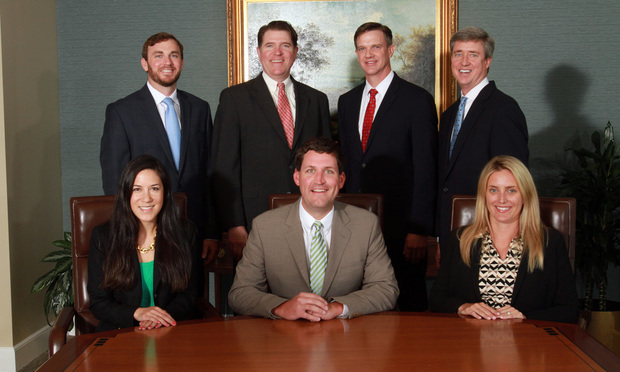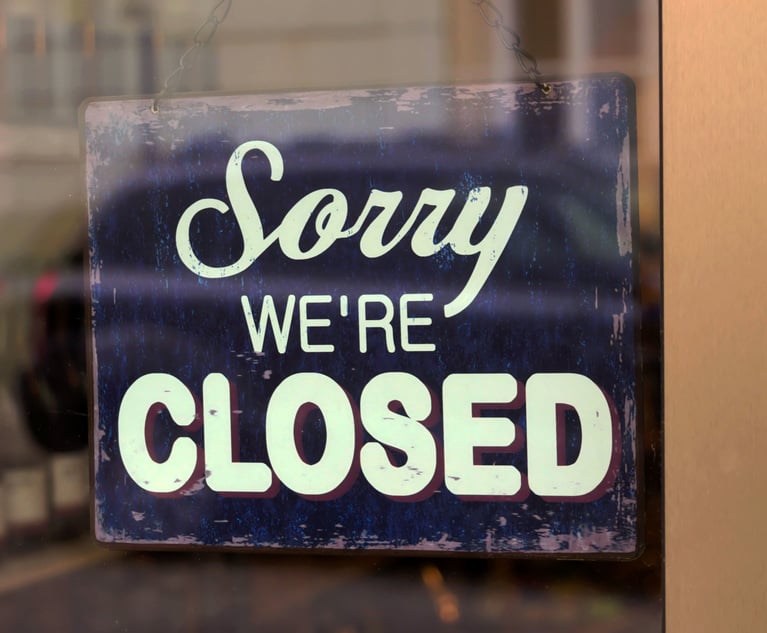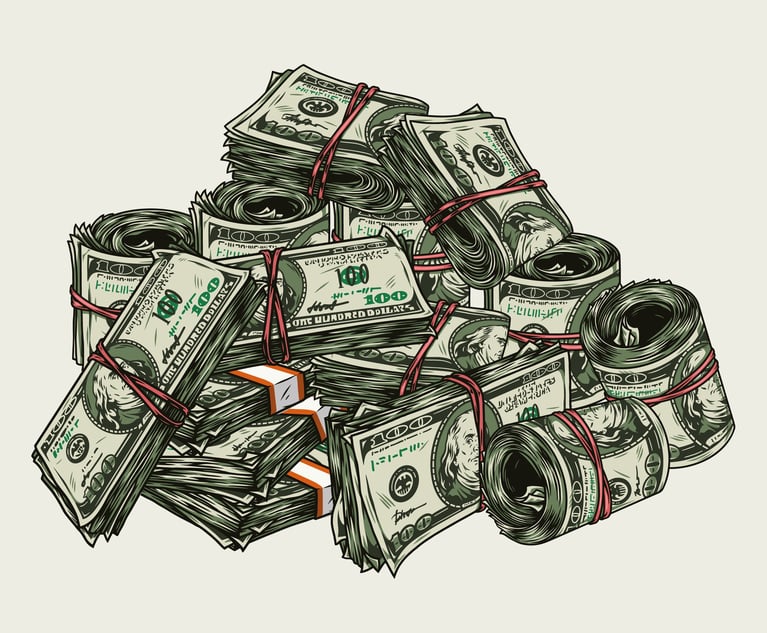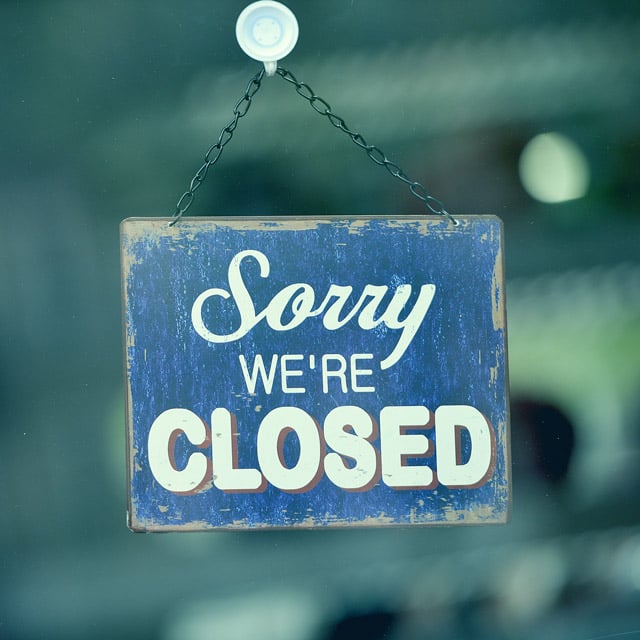Litigation Department of the Year, Midsize Firm, Product Liability: Weinberg, Wheeler, Hudgins, Gunn & Dial
"It is important to learn and adapt your case presentation, even when it was successful in a prior trial."
June 19, 2019 at 02:00 PM
6 minute read
 Weinberg Wheeler Hudgins Gunn & Dial, product liability group (seated, from left) Emily Quan, Jackson “Jad” Dial and Lindsay Gatling Ferguson, (standing, from left) Michael Paupeck, Scott Witzigreuter, Mark Johnson and Rick Sager. (Photo: John Disney/ALM)
Weinberg Wheeler Hudgins Gunn & Dial, product liability group (seated, from left) Emily Quan, Jackson “Jad” Dial and Lindsay Gatling Ferguson, (standing, from left) Michael Paupeck, Scott Witzigreuter, Mark Johnson and Rick Sager. (Photo: John Disney/ALM)
For the fifth year in the past six, litigators at Weinberg, Wheeler, Hudgins, Gunn & Dial are being honored.
The 2018 version of this story involves defending the maker of the “bucket” in which a utility lineman stands when fixing power lines. In 2018, the firm won a case brought by a lineman who was rendered a quadriplegic in an accident and sued for tens of millions of dollars. The case took 22 years and three trials—a mistrial and two defense verdicts—to resolve.
In another case, the firm defended a laser scanning and surveying service accused by a contractor of negligence that caused $19 million in additional construction costs for a long bridge.
The firm also successfully defended the company that provides stagehands for the David Copperfield show in Las Vegas. A plaintiff claimed extensive injuries, including a traumatic brain injury, arising from a trip and fall during an illusion that requires audience volunteers who “disappear” from a stage platform to travel through the backstage area, then outside the casino, only to “reappear” at the back of the theater. The firm explained that the protocols and safeguards in place to make sure the illusion runs safely and revealing surveillance video hurt the plaintiff's claims about the extent of his injuries.
One of the cases the firm won in 2018 stemmed from an accident in 1997, which led to a mistrial in 2009, a retrial in 2010 (reversed on appeal) and your ultimate victory last year. What are the challenges in maintaining litigation over such a long period of time?
When a case goes on for almost two decades, the people involved change, and memories fade. New venues, new juries, additional witnesses, loss of witnesses, new judges, changing counsel—all of these—are challenging dynamics which often impact your approach.
As trial lawyers, we devote a significant amount of time preparing arguments and developing our presentation in the days and weeks leading up to trial. When a case is new, it's easy to be intensely focused. As you prepare to try the same case a second or third time, maintaining that same level of focused intensity—as required when preparing for the first trial—can be challenging.
Once you've achieved success on behalf of your client, the temptation to “rest on your laurels” and to use the same approach that worked before can be a challenge. It is important to learn and adapt your case presentation, even when it was successful in a prior trial. We strive to continually improve our client's position. This requires us to anticipate changes that the other side would make and may involve focusing more or less on a given expert, adapting to changing motion in limine rulings, de-emphasizing certain evidence, stressing different facts and streamlining our case to focus on our best and safest arguments.
In another case, the firm successfully defended the provider of stagehands for a David Copperfield magic show in Las Vegas. How did the revelation of how Copperfield performed the illusion at issue complicate the case?
During one of the most publicized trials in recent history, David Copperfield, “the greatest illusionist of our time,” was faced with an important choice. In order to put on the best possible defense, it would be necessary for Copperfield to provide information about how he performed a “never before revealed” illusion, in effect, forcing him to reveal valuable trade secrets.
The fact that certain of these “never before revealed” illusions were relevant to this case added increased complexity. To protect and preserve Copperfield's valuable trade secrets, the defense obtained a writ which enabled us to put on the best possible defense while preserving valuable trade secrets.
During the trial, whenever all or portions of a “never before revealed” illusion (which preceded the illusion in this case and was not part of the actual sequence that led to the alleged injury) were to be discussed, the judge closed the court to the public, asked the media to turn off all cameras and excused anyone not involved with one of the parties.
News outlets around the world picked up this story of David Copperfield being made to reveal the inner workings of his illusions to defend against a claim and, after several weeks of testimony and surprise witnesses, the jury took just over two hours to render a verdict in favor of all defendants, including our client.
The firm “parachuted” into a matter two months before trial. How do you decide in those situations whether you have enough time to provide high quality representation?
High quality representation is non-negotiable. Whether we have two months or two years to prepare—ours is a 100% commitment to getting the case ready for trial. This means all hands on deck, around the clock. We are not afraid and have the courage to make bold and sometimes unorthodox decisions in pursuit of the best possible outcome. Our clients benefit from our experience in these situations.
The importance of direct and open communication between client and counsel, especially in “parachute” cases, cannot be understated. We accept the case as it stands—with all its challenges—and develop a strategy and plan of attack. Client understanding of the current state and buy-in on the go-forward plan is paramount.
This question also goes to the heart of who WWHGD is as a firm. We recruit and hire lawyers who want to try cases. We have developed a reputation, in addition to handling complex commercial and construction matters, for successfully handling high exposure cases, often with bad facts, in the toughest jurisdictions nationwide.
Trials and trial preparation are not new to us—we've tried over 450 cases in our 20 years as a firm. That experience alone allows us to be extremely efficient and effective—especially in the cases where time is short. Often, when we are brought in at the last minute—in some cases even less than two months—and are ready to try the case, it effectuates a settlement which has been unattainable to date.
In one of our favorite Daily Report stories about a case where we were parachuted in and the case settled, one of our opposing counsel said he was gratified the case didn't go to trial.
“We got a little worried,” he said, “when the Weinberg guys came on.” That speaks to our strong reputation.
This content has been archived. It is available through our partners, LexisNexis® and Bloomberg Law.
To view this content, please continue to their sites.
Not a Lexis Subscriber?
Subscribe Now
Not a Bloomberg Law Subscriber?
Subscribe Now
NOT FOR REPRINT
© 2025 ALM Global, LLC, All Rights Reserved. Request academic re-use from www.copyright.com. All other uses, submit a request to [email protected]. For more information visit Asset & Logo Licensing.
You Might Like
View All

Plaintiffs Attorneys Awarded $113K on $1 Judgment in Noise Ordinance Dispute
4 minute read
'Didn't Notice Patient Wasn't Breathing': $13.7M Verdict Against Anesthesiologists
12 minute readTrending Stories
- 1New York-Based Skadden Team Joins White & Case Group in Mexico City for Citigroup Demerger
- 2No Two Wildfires Alike: Lawyers Take Different Legal Strategies in California
- 3Poop-Themed Dog Toy OK as Parody, but Still Tarnished Jack Daniel’s Brand, Court Says
- 4Meet the New President of NY's Association of Trial Court Jurists
- 5Lawyers' Phones Are Ringing: What Should Employers Do If ICE Raids Their Business?
Who Got The Work
J. Brugh Lower of Gibbons has entered an appearance for industrial equipment supplier Devco Corporation in a pending trademark infringement lawsuit. The suit, accusing the defendant of selling knock-off Graco products, was filed Dec. 18 in New Jersey District Court by Rivkin Radler on behalf of Graco Inc. and Graco Minnesota. The case, assigned to U.S. District Judge Zahid N. Quraishi, is 3:24-cv-11294, Graco Inc. et al v. Devco Corporation.
Who Got The Work
Rebecca Maller-Stein and Kent A. Yalowitz of Arnold & Porter Kaye Scholer have entered their appearances for Hanaco Venture Capital and its executives, Lior Prosor and David Frankel, in a pending securities lawsuit. The action, filed on Dec. 24 in New York Southern District Court by Zell, Aron & Co. on behalf of Goldeneye Advisors, accuses the defendants of negligently and fraudulently managing the plaintiff's $1 million investment. The case, assigned to U.S. District Judge Vernon S. Broderick, is 1:24-cv-09918, Goldeneye Advisors, LLC v. Hanaco Venture Capital, Ltd. et al.
Who Got The Work
Attorneys from A&O Shearman has stepped in as defense counsel for Toronto-Dominion Bank and other defendants in a pending securities class action. The suit, filed Dec. 11 in New York Southern District Court by Bleichmar Fonti & Auld, accuses the defendants of concealing the bank's 'pervasive' deficiencies in regards to its compliance with the Bank Secrecy Act and the quality of its anti-money laundering controls. The case, assigned to U.S. District Judge Arun Subramanian, is 1:24-cv-09445, Gonzalez v. The Toronto-Dominion Bank et al.
Who Got The Work
Crown Castle International, a Pennsylvania company providing shared communications infrastructure, has turned to Luke D. Wolf of Gordon Rees Scully Mansukhani to fend off a pending breach-of-contract lawsuit. The court action, filed Nov. 25 in Michigan Eastern District Court by Hooper Hathaway PC on behalf of The Town Residences LLC, accuses Crown Castle of failing to transfer approximately $30,000 in utility payments from T-Mobile in breach of a roof-top lease and assignment agreement. The case, assigned to U.S. District Judge Susan K. Declercq, is 2:24-cv-13131, The Town Residences LLC v. T-Mobile US, Inc. et al.
Who Got The Work
Wilfred P. Coronato and Daniel M. Schwartz of McCarter & English have stepped in as defense counsel to Electrolux Home Products Inc. in a pending product liability lawsuit. The court action, filed Nov. 26 in New York Eastern District Court by Poulos Lopiccolo PC and Nagel Rice LLP on behalf of David Stern, alleges that the defendant's refrigerators’ drawers and shelving repeatedly break and fall apart within months after purchase. The case, assigned to U.S. District Judge Joan M. Azrack, is 2:24-cv-08204, Stern v. Electrolux Home Products, Inc.
Featured Firms
Law Offices of Gary Martin Hays & Associates, P.C.
(470) 294-1674
Law Offices of Mark E. Salomone
(857) 444-6468
Smith & Hassler
(713) 739-1250







